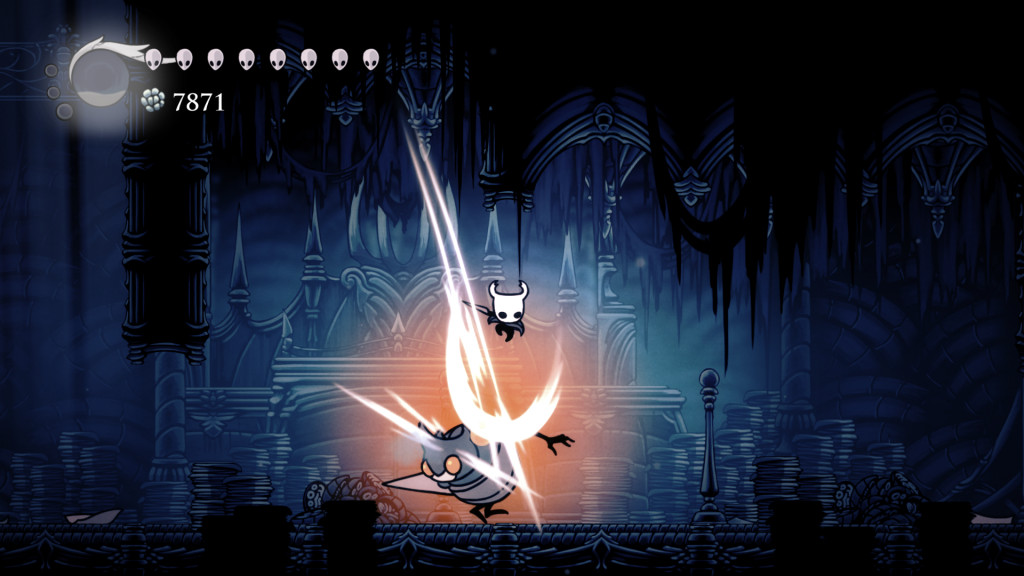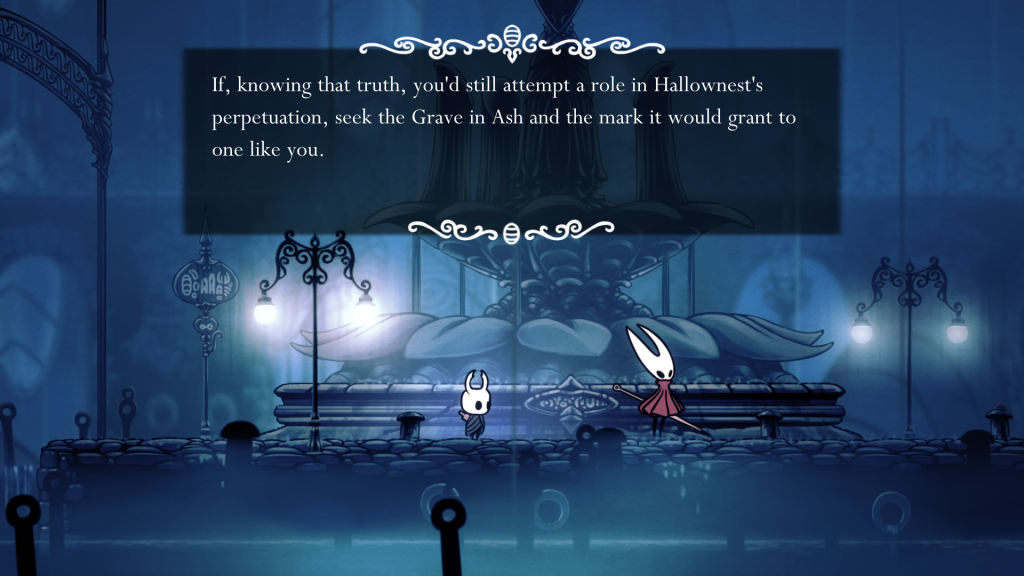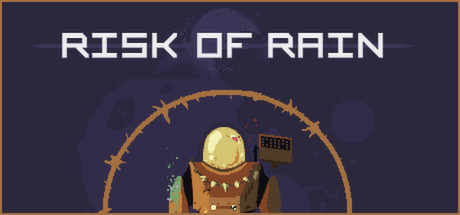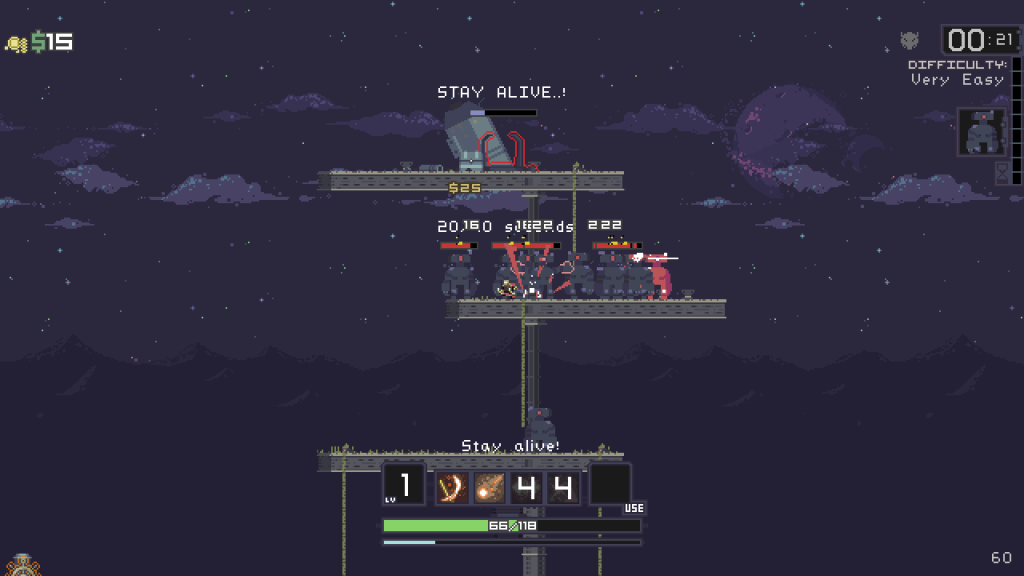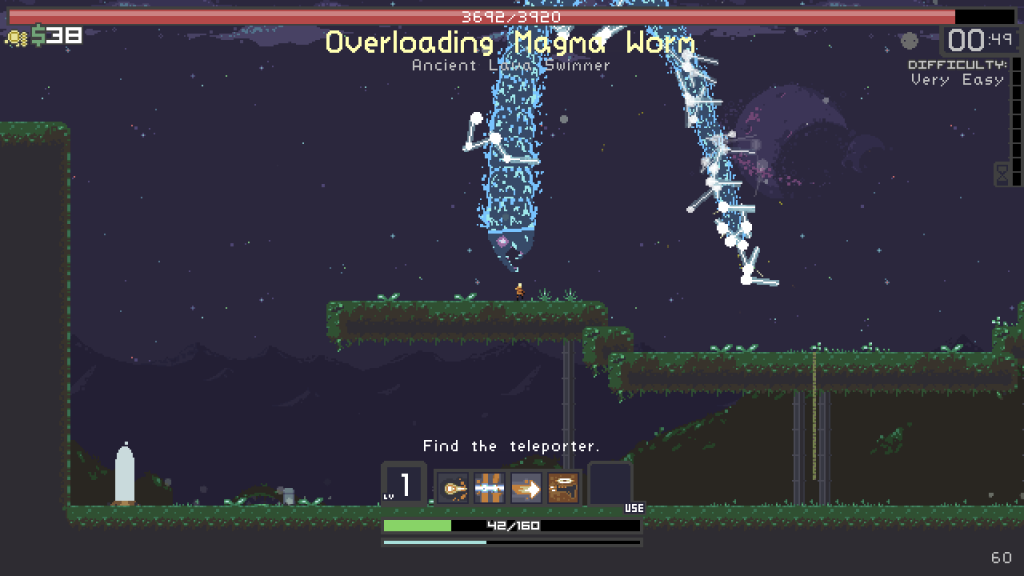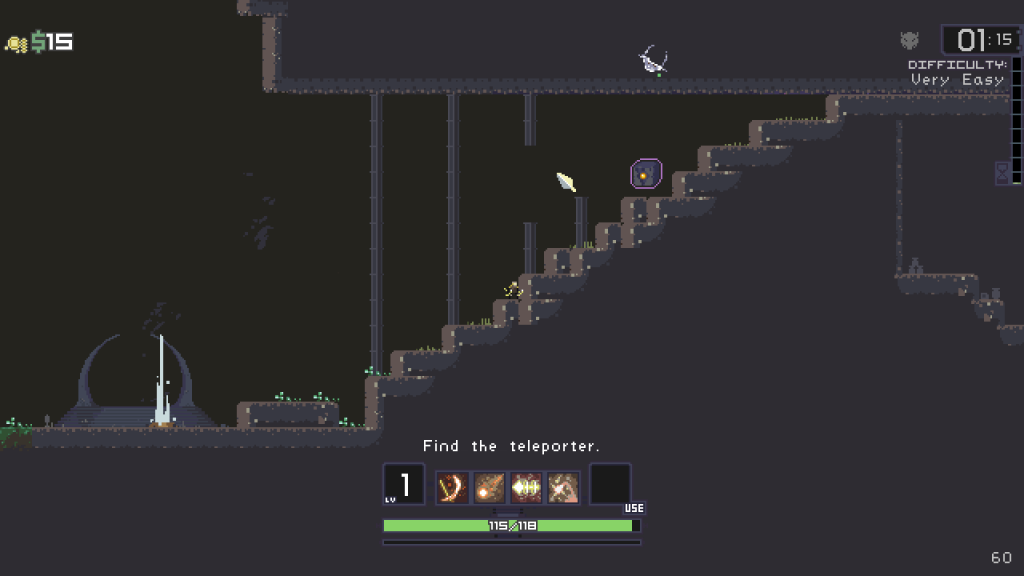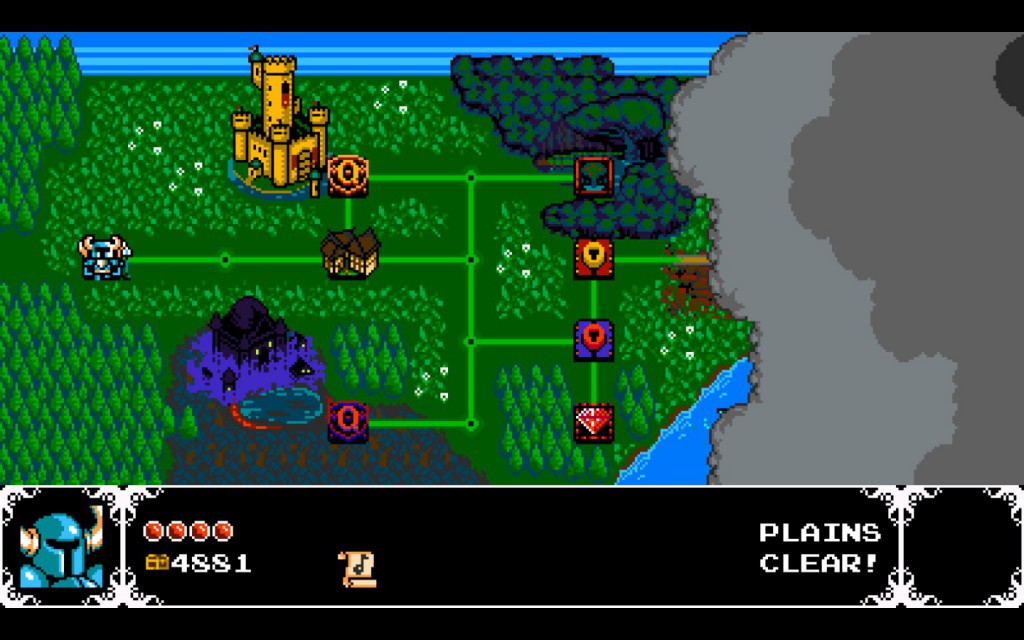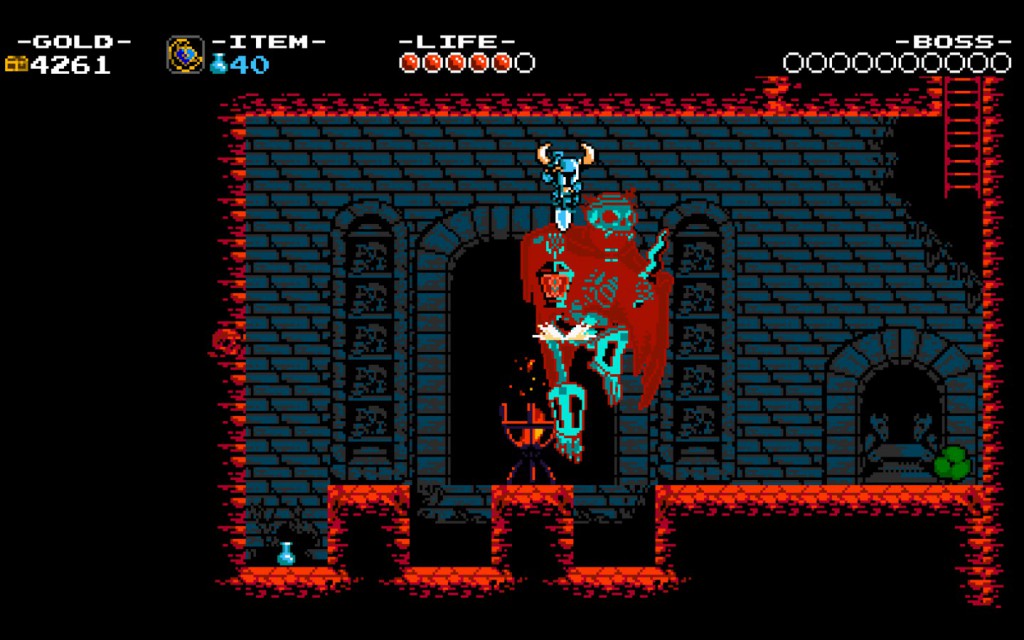Excuse me while I brush the cobwebs off.
At some point this month (possibly even this week), there’s going to be a Game of the Year show from Aggrochat. I’ll keep most of my thoughts contained to that show (or possibly a post after said show), but I do want to place some special emphasis on one game from last year. In a year filled with many incredible games, one stands out as my overall favorite.
Hollow Knight was my favorite game of 2017, and also my favorite Metroidvania, period. (For anyone wondering, it’s displacing Castlevania: Aria of Sorrow.) It’s a beautiful and expansive entry into the genre, set in a kingdom of bugs. The art style is fairly unique: It’s hand-drawn with limited use of color. This is fairly subtle, but it’s enough to give most areas a unique feel. Things that hurt you tend to be orange.
A while back, Matt Lees mentioned (when talking about Hyper Light Drifter) that “It’s a bit like Dark Souls” basically translates to “I don’t know what I’m talking about.” I’m not really going to help matters at all: Hollow Knight bears a more than superficial resemblance to Dark Souls. Aside from the obvious “lose all of your currency on death” aspect, it really shows in the storytelling. You are dropped into the kingdom and a nearly empty town with no context. Bits and pieces of the story are handed out as you go, mostly from various NPC interactions. Taken as a whole, you can get a picture of the world (and the awful things that happened before you got there). You get the feeling of being alone in a very big world, thanks to how rare it is to see NPCs that don’t want to do you harm.
The thing that really puts Hollow Knight over the top for me is the incredible sense of exploration. The game is very nonlinear even for the genre, and the map is very large. Without sequence breaking, you need to get the fireball, the dash, and the wall climb. After this point, things get really open. You’re intended to go into City of Tears, but there’s very little preventing you from poking the other edges of the map and finding your way into some very dark places. On a smaller scale, the game is good at rewarding poking into things. Hidden rooms are blacked out until you either walk into them or break open the entrance. Tiny corners tend to have some sort of reward, usually in the form of a relic (lore and currency) but sometimes a captured grub or something rarer. I also found traversal a lot of fun once you have the dash and wall-jump, although no single ability stands out in this area. (Ori still holds the crown for most fun movement ability ever.)
All of this without even mentioning the charms, or the bosses, or the major secrets. I really had fun with this one, and you can probably hear me repeat a lot of this in a few days.


